The Samsung Galaxy S10+ Snapdragon & Exynos Review: Almost Perfect, Yet So Flawed
by Andrei Frumusanu on March 29, 2019 9:00 AM ESTCamera - Low Light Evaluation
Low-light capture improvements is something that Samsung has been very mum about for the Galaxy S10. Fundamentally on the hardware side of things nothing has really improved compared to the Galaxy S9/Note9. So in practise, any difference we would be seeing should be solely based on the processing improvements of the Galaxy S10.
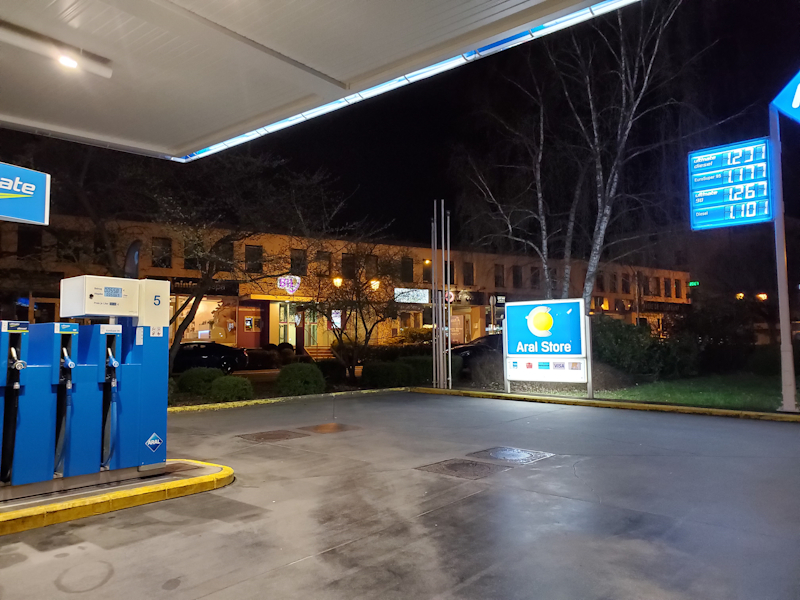
[ Galaxy S10+ Snapdragon ] - [ Galaxy S10+ Exynos ]
[ Galaxy Note9 (E) ] - [ Galaxy S9+ (S) ] - [ Galaxy S8 ]
[ iPhone XS ] - [ iPhone X ] [ LG V40 ] - [ OnePlus 6T ]
[ Pixel 3 ] - [ View20 ] - [ Mate 20Pro ]
In the first shot, we’re seeing again very different results between the Snapdragon and Exynos, but in a twist compared to the daylight shots, this time around it’s an advantage on the side of the Exynos model. Here the latter models is able to bring out a lot more shadows in the scene and is significantly sharper than the Snapdragon variant. The Snapdragon does a bit better on the bright highlights of the signage, however I don’t think this was worth it as it gives up too much in other parts of the shot.
I feel as if the Snapdragon has quite a bit of sharpening going on, which makes very little sense to use in a scenario like this.
The Galaxy S10’s are both beat by the Mate 20 Pro’s large sensor which just has much better native dynamic range, retaining more texture details on the gas station floor and roof.
Using the wide-angle lens in such a scenario doesn’t result in very good picture. The Snapdragon achieves better dynamic range and able to show the signage correctly without overblowing it, however the Exynos beats it in terms of detail. Noise on the latter is a lore more coarse and pronounced which can result in some ugly regions on even surfaces.

[ Galaxy S10+ Snapdragon ] - [ Galaxy S10+ Exynos ]
[ Galaxy Note9 (E) ] - [ Galaxy S9+ (S) ] - [ Galaxy S8 ]
[ iPhone XS ] - [ iPhone X ] - [ LG V40 ] - [ OnePlus 6T ]
[ Pixel 3 ] - [ View20 ] - [ Mate 20Pro ]
Big advantages in sharpness on the bright parts of the picture for the Snapdragon with stronger contrast for this phone. The Exynos doesn’t do well on the bright parts, blurring them, but on the other hand it has better details in the shadows than the Snapdrgon, with overall less pronounced light noise.
In terms of light capture, the Mate 20 Pro is far ahead and Night Sight on the Pixel 3 also sweeps the floor with the competition.
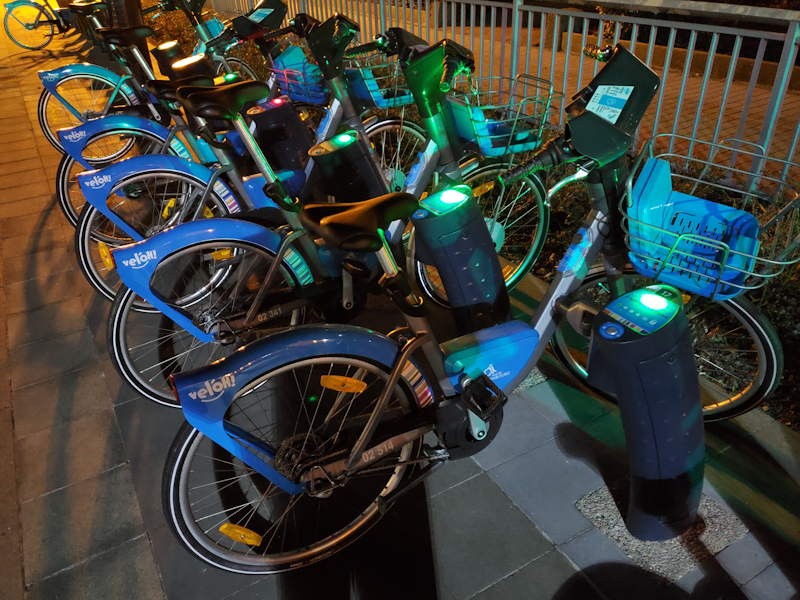
[ Galaxy S10+ Snapdragon ] - [ Galaxy S10+ Exynos ]
[ Galaxy Note9 (E) ] - [ Galaxy S9+ (S) ] - [ Galaxy S8 ]
[ iPhone XS ] - [ iPhone X ] - [ LG V40 ] - [ OnePlus 6T ]
[ Pixel 3 ] - [ View20 ] - [ Mate 20Pro ]
The Snapdragon here is heavier processed with darker shadows and noise reduction, however this makes little sense in a low-light show and the Exynos is more natural with better shadow detail even if it has more natural sensor noise.
Although Samsung at least beats the newest iPhones, it’s no match for Huawei and the Pixel’s Night sight.
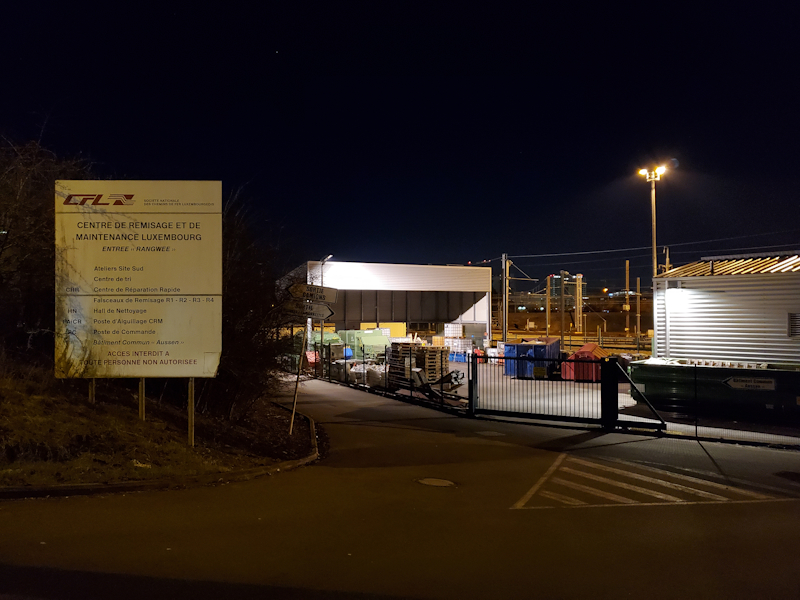
[ Galaxy S10+ Snapdragon ] - [ Galaxy S10+ Exynos ]
[ Galaxy Note9 (E) ] - [ Galaxy S9+ (S) ] - [ Galaxy S8 ]
[ iPhone XS ] - [ iPhone X ] - [ LG V40 ] - [ OnePlus 6T ]
[ Pixel 3 ] - [ View20 ] - [ Mate 20Pro ]
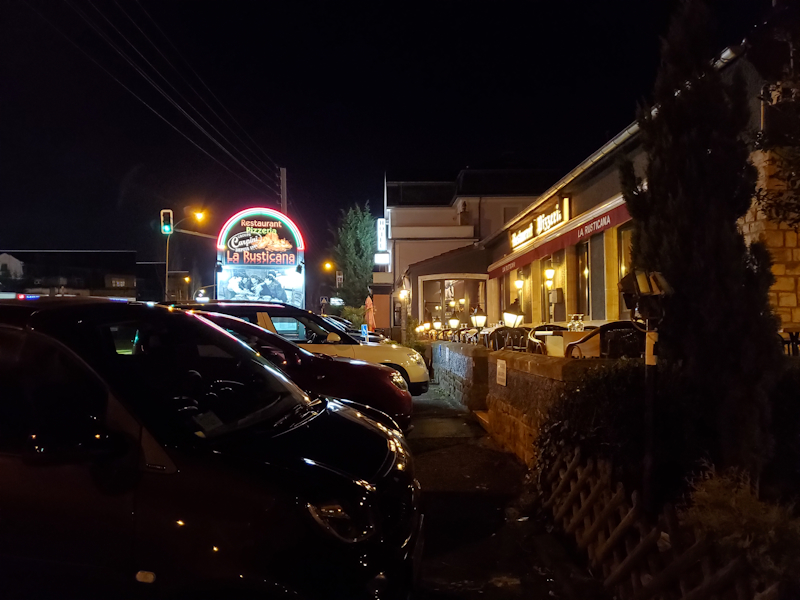
[ Galaxy S10+ Snapdragon ] - [ Galaxy S10+ Exynos ]
[ Galaxy Note9 (E) ] - [ Galaxy S9+ (S) ] - [ Galaxy S8 ]
[ iPhone XS ] - [ iPhone X ] - [ LG V40 ] - [ OnePlus 6T ]
[ Pixel 3 ] - [ View20 ] - [ Mate 20Pro ]
In the last generic low light shot we see the Snapdragon again favour evening out highlights and sacrificing shadows. The Exynos does the opposite with more blown out highlights but with better shadow detail retention in the foreground.
On the wide angle, the Exynos produces a much more useable shot even though the noise is quite terrible.
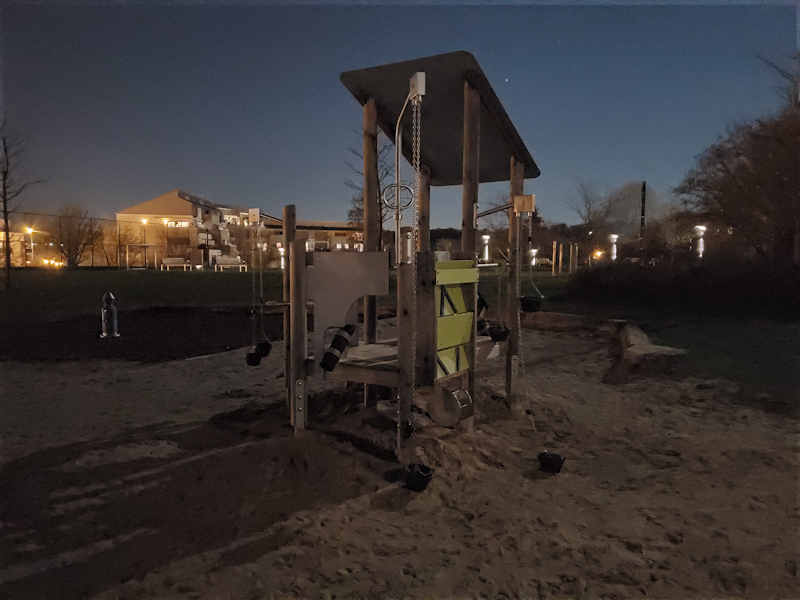
[ Galaxy S10+ Snapdragon ] - [ Galaxy S10+ Exynos ]
[ Galaxy Note9 (E) ] - [ Galaxy S9+ (S) ] - [ Galaxy S8 ]
[ iPhone XS ] - [ iPhone X ] - [ LG V40 ]
[ OnePlus 6T ] - [ Pixel 3 ]
[ View20 ] - [ Mate 20Pro ]
Going into extreme low light scenarios, we’re venturing into shots that usually in the past we didn’t expect phones to be able to capture.
This is the first scene in which Samsung’s new Bright Night mode triggers. The new extreme ultra low light mode functions similarly to Huawei’s Night mode or Google’s Night sight, although the results here aren’t quite the same. The result here heavily favour the Snapdragon chip as it’s able to produce much less noise. It’s not competing with Huawei or Google, however it is able to showcase a result that is much better than some other traditional shooters.
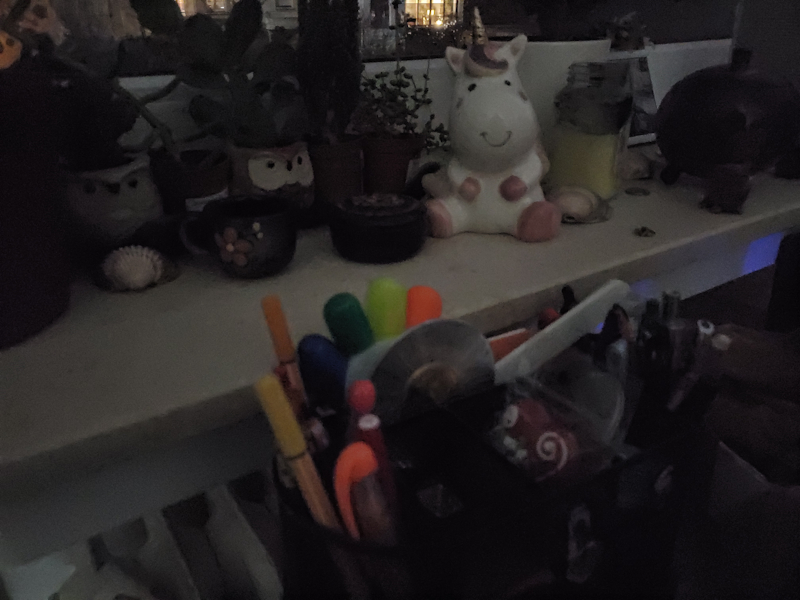
[ Galaxy S10+ Snapdragon ] - [ Galaxy S10+ Exynos ]
[ Galaxy Note9 (E) ] - [ Galaxy S9+ (S) ] - [ Galaxy S8 ]
[ iPhone XS ] - [ iPhone X ] - [ LG V40 ] - [ OnePlus 6T ]
[ Pixel 3 ] - [ View20 ] - [ Mate 20Pro ]
A second example of the new Bright Night mode, we again see that it does help the S10 over its auto mode and it lands the phone in third place after Huawei’s flagship and Google’s Night Sight.
Low-light Conclusion
Overall, the low-light capture ability of the Galaxy S10 isn’t very exciting. Fundamentally Samsung needed to innovate more in this regard and I would have wanted to see some more innovation to the likes of Huawei and Google.
Low-light is again a scenario where the Snapdragon and Exynos variants of the S10 differ quite a bit. The latter tends to produce more natural noise in most shots and retains more shadow detail, while the Snapdragon does better in brighter parts. Overall, I’d say it’s a toss-up between the two and it’ll depend on the given scene.










229 Comments
View All Comments
Andrei Frumusanu - Monday, April 1, 2019 - link
We don't have any good methodology on things like signal, network (does any site test this *accurately*?).As for the UI bits, it's something I wanted to have in the piece but also didn't want to further delay the article another week. In general OneUI is Samsung's by far best user interface and has fantastic features without them feeling like gimmicks. It's currently in my opinion the best variant of Android, though I'm sure some Google users will get angry at me for saying that.
GreenMeters - Monday, April 1, 2019 - link
"If you’re a reader in the US or other Snapdragon markets, you can stop reading here and feel happy about your purchase or go ahead and buy the Galaxy S10+."Unfortunately, no, you can't feel happy about it, because once again the Snapdragon variant has its bootloader locked. So your expensive purchase that could easily have a 5+ year lifespan with an open source OS providing up-to-date security and features is now artificially limited to 2 years of Samsung's lousy support.
XelaChang - Monday, April 1, 2019 - link
Quite disappointing for Exinos, especially the audio. Going to look into Huawei P30 instead.Quantumz0d - Monday, April 1, 2019 - link
Hello Andrei, huge thanks for the solid piece. I don't think there are any editors out who does this type of analysis. The most superb part was the battery analysis, just fantastic. I remember your piece on the Note 9 as well.Because smartphones with soldered/sealed batteries are a pain with 2 Yr EOL of cycles due to aggressive current/power/volts/cycles. I wish when you cover the LG. Maybe kindly have a look at their Qnovo. Replacing at end user is so bad, ruins the IP rating and hard to source. Samsung improvising this is a really good news.
Next the Camera Hole points all are valid. Its worse than a notch with that absurdly thicc status bar and the stupid icons on the right side. An eye sore with dead pixels. Samsung showed in China for an under screen camera perhaps the Vertical integration you mentioned due to the Exynos applies here as well, perhaps the cost as well..
One UI though perhaps feels polished but its too childish/kid friendly to me and excessively rounded like iOS instead of stock Pie/Q, that is bad IMO.
Still have to read up on the Camera/Display. Also I think you should mention one great advantage that Exynos has - Bootloader Unlock. Without that QSD version is just a paperweight, zero ownership, zero tuning. IMO a brick.
Also good to hear about the speaker system performance, apple mentions it always its surprising how they didn't yet offered a good quality, finally those AKG buds are very very bad. I heard them, their tiny driver is horrible in low end and mid range, its shameful. I'm not up to date with recent audio progress but at $100 we can get RHA MA 750/ Final Audio / iBasso IT01/ TFZ King II / Mee Audio P1 / FiiO F9 and Pro / Dunu Titan1 and ton of IEMs with far more superior quality.
I hope they get the damn AKM chips into their phones and compete with LG ESS and take the Audio seriously, its a shame that LG doesn't advertise ESS anymore but Meridian collaboration.
Finally the Audio DAC part, sometimes being 100% accurate doesnt necessarily mean best, my iPod 5.5G Wolfson DAC before CL merger many people say the iPod 6G+ Classics are better due to the ball roll off they mention on the Wolfson 5.5G DAC, I have both of them running same OS (Aftermarket stable Linux based Rockbox) and the Cirrus Logic G classic sounds fatiguing to me, metallic and lack of thump vs the 5.5G. I think maybe your impression is also similar. I heard the 835s Acoustic in my Car with my friend's Note 8 US version and it was hollow and lack of any texture and rumble. The iPod beats it by a HUGE margin both of th 6G and 5.5G and 5.5G being better, the V30s ESS sounds more balanced vs the 5.5G as in clear at the expense of soundstage (in car more significant) and sharpness being higher but retains excellent sub bass. All this is subjective. Just to let you know..
Thanks.
Quantumz0d - Monday, April 1, 2019 - link
Correction.> Apple mentions it always its surprising how they didn't yet.
Apple stands at top as one of the best speakers on an iPad/iPhone.
Andrei Frumusanu - Tuesday, April 2, 2019 - link
The iPhone XS improved it, but the S10 beats it handily in speaker quality.Quantumz0d - Tuesday, April 2, 2019 - link
Wow, that's really surprising and great news. Thank you for the information. I'll stop by to a Best buy near to me and check it out.Perhaps they'll improve on their new S5 855 Tablet (hopefully with jack, unlike S5e) because the Tab S4 is outright beaten to pulp by iPad Pro 2017.
s.yu - Friday, April 5, 2019 - link
Wow beating Apple at audio is definitely something special.Quantumz0d - Monday, April 1, 2019 - link
Damn another typo>Ball roll off
Its Bass Roll off. And 6G missing before "classic sounds"
watersb - Tuesday, April 2, 2019 - link
What an incredible opportunity to compare two leading SoC architectures.